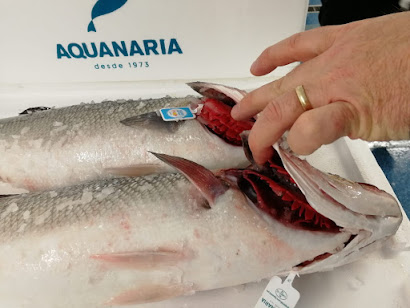A hugely popular fish with chefs and diners.
Scientific advice suggests is hugely overfished.
Advice from the EC was for a total 6 month ban on commercial fishing from January, advice from scientific and agencies was for more.
Result was neither.
Some small sets of closures and anglers, whom must have no impact on the fisheries especially verses pair trawlers, told to return their mostly irrelevant landings. Line catch fisherman argue their catch method is sustainable, which technically it is, however its the same stock they are taking from so any method will increase pressure on a stock that is overfished. Anyhow decisions are now made, catch bans reduced or ignored, fish will remain on the menu at stages throughout the year.
For me the interesting and confusing part is the catch data and some level of stock understanding is in place. In 1992 when a closure of the Atlantic Northwest Cod Fishery was made, far to late to avoid almost complete removal of a stock, no statistics had been available apart from less fish were caught year on year and fishing effort increased year on year. Decisions to keep fishing were based on social and economic factors and technology had been continually improving at a staggering pace improving catches. Fishing continued relentlessly with little controlled management until the forced closure was made. The complete closure is believed to have put 40,000 people out of work. Recovery of the stocks wasn't reported until 13 years later and a study in 2010 claimed the stock had recovered to 10% of its original volume.
One would think the lessons from the Canadian experience should really be noted? We shall see if the December's decisions on the commercial bass landings are right or wrong - everyone will have a different opinion depending which sector they represent. I certainly have my opinion.
What you need to know
For many months there have been concerns over the
stock status of Atlantic Wild Sea bass across the whole of the North
East Atlantic (FAO 27). In October 2015, to ensure the protection of the
species, the Marine Conservation Council (MCS)
re graded all fisheries by all catch methods a red rated 5. Following
this an initial proposal on 10th November by the European Commission for
a complete commercial and recreational ban from January 1st for 6
months with then a 1 ton per vessels limit for
the second six months was agreed. This would be put in place to allow
the species short term recovery.
“Sea bass is a special case: real management
measures for sea bass were only put in place in January 2015 and catch
limits were only put in place in June 2015. The Commission is therefore
building on the measures taken in 2015 to halt
the dramatic decline in this important stock. Today's proposal includes
a complete fishing ban for commercial vessels and recreational anglers
in the first half of 2016. For the second half of 2016, the Commission
is proposing a monthly one tonne catch limit
for vessels targeting sea bass, and a one fish bag limit for
recreational anglers. It is also proposing to maintain the closure for
commercial fishing around Ireland”
European Commission; Brussels, 10 November 2015
After a consultation meeting in December lesser measures were agreed with varying bans
"Recreational anglers face a catch and release
only period for the first half of the year followed by a one fish limit
for the second half. The commercial sector will also be subject to a
moratorium on fishing between February and March
(not the 6 month ban proposed in November) and face restrictions to
catches the rest of the year (1.5 tonne/month – not 1 tonne as proposed
in November) however, this may not be enough to protect the already
heavily overfished stock."
European Commission; Brussels, December 2015
With the reduced measures the MCS gave the following response.
"Seabass, which has been a major focus for the
UK due to its importance to both the recreational and commercial
fisheries sectors, is once again in the limelight, we are concerned that
too little is being done to ensure the future of
this stock. We feel that the proposals are unlikely to allow the stock
to meet targets of sustainable fishing by 2017 and following the next
set of ICES advice (due in June 2016) if the reduction in catches has
not resulted in a significant decrease in mortality
then a complete moratorium on fishing for seabass should not be
discounted to allow the stock to recover"
Marine Conservation Society, December 2015
The scientific advice from ICES for catches in
2016 is to further reduce (by 47%) total landings (commercial and
recreational) to no more than 541 tonnes in Total. The status of the
Wild Seabass stocks in FAO 27 remain in a very precarious
position and all parties need to make the correct decisions with
regards capture and re sale to protect the status of a very important
species.
So there you have it. Too date the only statement found relating to removal of wild bass from sale was by my seafood concession at Selfridges Wild Bass Statement
This concession complies to MCS seafood ratings and will not sell red rated species. This left wild sea bass from all fisheries and catch methods no longer available for sale after the MCS new rating advice.





